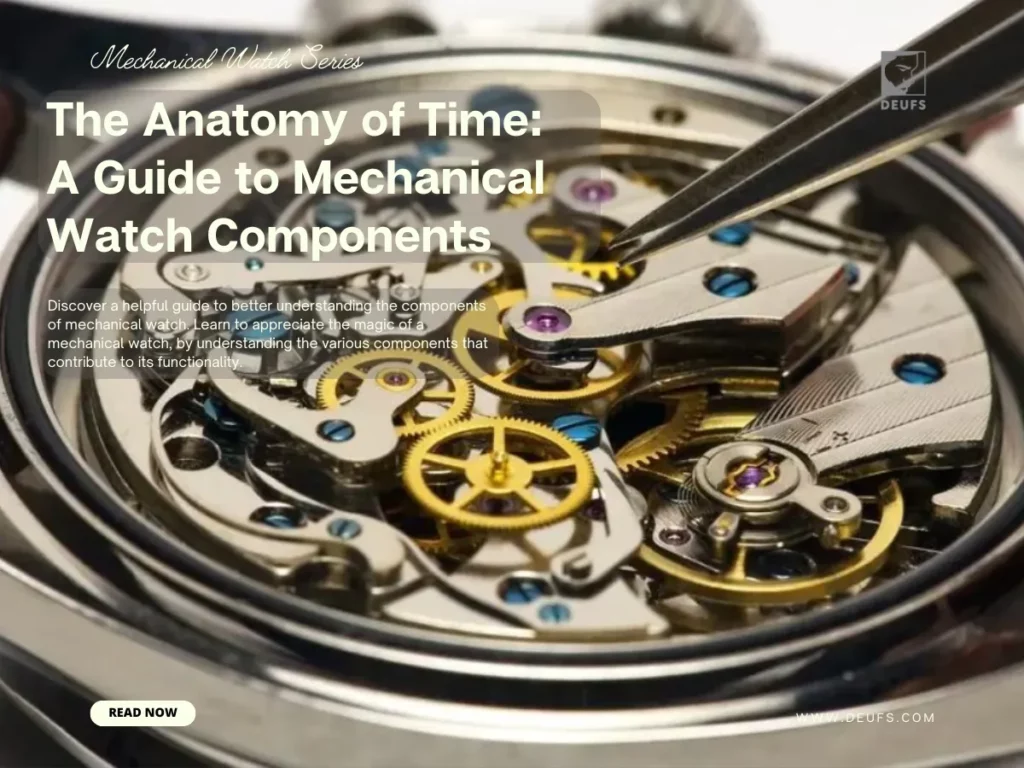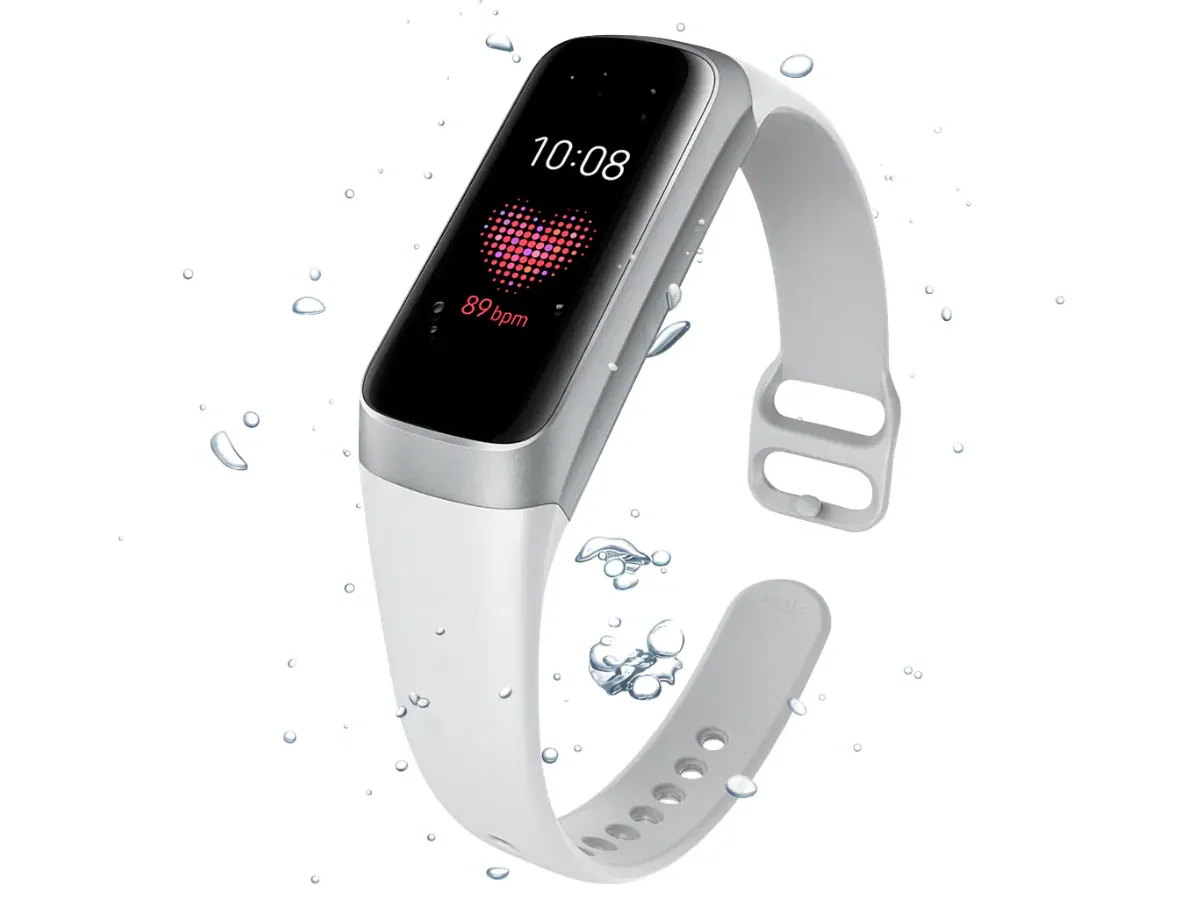
Mechanical watches have captivated our hearts and minds for centuries. Unlike their electronic counterparts, mechanical watches operate purely through mechanical processes, where intricate gears, springs, and other components work in harmony to measure time with unparalleled precision.
The beauty of mechanical watches lies not only in their ability to keep time but also in the artistry and craftsmanship involved in their creation. To truly appreciate the magic of a mechanical watch, it is crucial to understand the various components that contribute to its functionality.
Each component plays a crucial role, and a deep understanding of their interconnections enhances our overall comprehension of these extraordinary timepieces.
See also: Unleash the Power of Watches: An In-Depth Look at the Components of a Timepiece
The Watch Movement: The Heart of a Mechanical Watch

There are two primary types of mechanical watch movements: manual and automatic. The manual movement, also known as a hand-wound movement, requires manual winding by rotating the crown. This action winds the mainspring, storing potential energy that will be gradually released to power the watch.
On the other hand, automatic movements, also referred to as self-winding movements, harness the kinetic energy generated by the wearer’s natural wrist movements. Within the movement, a rotor is connected to the mainspring. As the wearer moves their wrist, the rotor rotates, winding the mainspring and storing energy to power the watch.
Regardless of the type, the movement’s primary role is to power and regulate the watch’s functions. It achieves this through a series of interconnected components.
The escapement, the regulating organ within the movement, controls the release of energy and ensures the precise measurement of time. Composed of the escape wheel, pallet fork, and balance wheel, the escapement mechanism governs the consistent and accurate movement of the watch’s gears.
See also: A Timeless Treasure: The Mechanical Movement Watch
The Mainspring: The Power Source
In the intricate world of mechanical watches, the mainspring serves as the life force, the power source that drives these remarkable timepieces.
So, what exactly is a mainspring? Picture a coiled spring, carefully wound within the watch movement, eagerly waiting to unleash its potential energy. The mainspring is precisely that—an elastic, coiled spring that stores mechanical energy as it is wound and gradually releases that energy to power the watch.
Functionally, the mainspring acts as the primary energy reservoir within a mechanical watch. When the watch is wound, either manually or automatically, potential energy is stored in the coiled mainspring. As the watch is worn or placed in an automatic watch winder, the mainspring gradually unwinds, releasing that stored energy in a controlled manner.
The mainspring’s relationship with other components in the watch movement is of utmost importance. The energy released by the unwinding mainspring is regulated by the escapement mechanism, which consists of the escape wheel and the pallet fork. The escapement ensures that the energy is released in measured increments, resulting in the precise and controlled movement of the watch’s gears.
The Gear Train: Transmitting Power and Motion
The gear train is a complex arrangement of gears that work together to transmit power from the mainspring to the escapement, ensuring the smooth and accurate movement of the watch’s hands.
At the heart of the gear train is the center wheel. This wheel receives power directly from the mainspring and serves as the primary intermediary between the mainspring and the rest of the gear train. It acts as a bridge, transferring energy from the mainspring to the other wheels in the system.
The center wheel then drives the rotation of the third wheel, which further transmits power to the fourth wheel. The fourth wheel, with its larger size, acts as a speed-reducing gear, which allows for smoother and more controlled movement of the other components within the watch movement.
Through the gear train, power is transmitted from the mainspring to the escapement, allowing the watch to keep time with accuracy and reliability. This seamless transfer of energy ensures that the watch’s hands move smoothly and consistently, tracking the passage of time with precision.
The Escapement: Regulating Timekeeping
The escapement is a mechanism within the watch movement that controls the release of energy from the mainspring and regulates the movement of the watch’s gears. It ensures that power is transmitted in a controlled and precise manner, resulting in accurate timekeeping.
The escapement mechanism operates on the principle of the balance between potential and kinetic energy. As the mainspring unwinds and releases energy, it propels the escape wheel to rotate. The rotation of the escape wheel, in conjunction with the interaction of the pallet fork, generates small impulses that control the oscillation of the balance wheel.
The escapement’s intricate dance of gears, jewels, and pallets ensures that the watch’s hands move in a consistent and regulated manner. By carefully controlling the release of energy, the escapement allows for precise timekeeping, keeping the watch running with utmost accuracy.
The Balance Wheel and Hairspring: The Watch’s Timekeeper
The balance wheel, often likened to a miniature pendulum, is a wheel with weighted rims that oscillates back and forth. It is the primary regulator of the watch’s timekeeping, dividing time into equal increments and ensuring accurate measurement.
The function of the balance wheel and hairspring duo is to maintain a steady and consistent oscillation. As the mainspring releases energy through the gear train and escapement, the balance wheel and hairspring combination captures and regulates that energy. The balance wheel swings back and forth, with each swing marking a precise measure of time.
The balance wheel and hairspring combination embodies the precision engineering and artistry of horology. These components are at the core of a mechanical watch’s ability to accurately measure time, reflecting the delicate balance between scientific principles and meticulous craftsmanship.
The Dial and Hands: Displaying Time

The dial, also known as the watch face, is the flat surface on which various indicators and markings are placed to show the time and other complications. Dials come in a wide range of styles, materials, and designs, allowing watchmakers to showcase their creativity and craftsmanship.
From classic white dials with simple hour markers to elaborate designs featuring intricate guilloché patterns or enamel work, the dial sets the stage for the watch’s presentation. It often includes elements such as hour markers, minute markers, sub-dials for additional functions, and brand logos or emblems.
Meanwhile, the hands are those slender pointers that gracefully glide across the dial. The hands indicate the hours, minutes, and sometimes seconds on the watch face, allowing us to read the time at a glance. Just like dials, watch hands come in various shapes, sizes, and designs.
The hour hand is typically the shortest and thickest hand, indicating the hour portion of the time. The minute hand, longer and thinner, points to the minutes, while the seconds hand, if present, sweeps across the dial in a continuous motion. Some watches also feature additional hands for specific functions, such as a chronograph hand or a GMT hand for tracking multiple time zones.
The dial and hands work together to provide a clear and intuitive display of the time. The hands are carefully aligned with the hour markers on the dial, allowing for quick and accurate time reading. The contrast between the hands and the dial, such as contrasting colors or luminous coatings, ensures legibility in various lighting conditions.
See also: The Future of Timekeeping: How Technology Will Shape the Watch Industry
Complications: Additional Functions and Features
A complication refers to any additional function or feature beyond basic timekeeping. They showcase the ingenuity and craftsmanship of watchmakers, pushing the boundaries of what a timepiece can offer.
One of the most common and practical complications is the date display. This feature indicates the current date on the dial, typically using a small aperture or sub-dial. Some watches even have the ability to display the day of the week or the month, providing added convenience and practicality.
Another popular complication is the chronograph. This feature allows the watch to function as a stopwatch, enabling the measurement of elapsed time with precision. Chronographs often have multiple sub-dials to track seconds, minutes, and hours, making them useful for timing various activities, from sporting events to cooking.
Moon phase complications add a touch of celestial beauty to a watch. These displays depict the changing phases of the moon as it orbits the Earth, showing the waxing and waning crescents, half-moons, and full moons. Moon phase complications are often combined with other features, such as date displays or astronomical indications, providing a poetic and romantic element to the timepiece.
Other notable complications include perpetual calendars, which automatically adjust for the varying lengths of months and leap years, ensuring the accurate display of date information. There are also tourbillons, which counteract the effects of gravity on the movement for enhanced accuracy, and minute repeaters, which chime the time audibly at the press of a button.
The Watch Case and Crystal: Protecting the Movement

The watch case serves as the outer shell that houses the intricate movement within. It is responsible for protecting the delicate gears, springs, and other components from external forces, such as impacts, dust, and moisture. Watch cases are available in a variety of materials, each with its own unique characteristics and visual appeal.
One of the most common materials for watch cases is stainless steel. This durable and corrosion-resistant metal offers strength and longevity while providing a classic and timeless look. Titanium is another popular choice, known for its lightness and exceptional durability. It is often used in sports and luxury watches.
Precious metals like gold or platinum are favored for their luxurious and prestigious appeal. They add a touch of elegance and opulence to the watch, making it a statement piece. Other materials such as ceramic, carbon fiber, and high-tech alloys are also used to create modern and avant-garde watch cases, catering to different tastes and styles.
The two most common types of watch crystals are sapphire and mineral. Sapphire crystals, made of synthetic sapphire, offer exceptional hardness and scratch resistance. They provide a clear and virtually distortion-free view of the dial. Mineral crystals, on the other hand, are made of hardened glass and offer good durability at a more affordable price point.
The watch crystal can have various forms, such as flat, domed, or even curved to match the shape of the watch case. These design choices add depth and character to the watch, contributing to its overall visual appeal. Some watches also feature anti-reflective coatings on the inside of the crystal to reduce glare and enhance legibility in different lighting conditions.
Watch cases and crystals also play a crucial role in ensuring water resistance. Through careful engineering and sealing techniques, watchmakers create a watertight enclosure that protects the movement from moisture and allows the watch to be worn in water-related activities.
Water resistance ratings, indicated in meters or atmospheres (ATM), reflect the watch’s ability to withstand water pressure at different depths. Whether it’s a splash-resistant dress watch or a robust dive watch rated for significant depths, the watch case and crystal work together to maintain the integrity of the timepiece even in challenging environments.
See also: Watches on the Frontline: The Essential Role of Timekeeping in Military Operations
Conclusion
In this comprehensive guide to mechanical watch components, we have delved into the fascinating world of horological craftsmanship. From mesmerizing movements to protective cases and crystals, each component plays a vital role in these remarkable timepieces.
These components perform awe-inspiring functions. The mainspring stores and releases energy, the gear train transmits power and motion, the escapement regulates timekeeping, and the balance wheel ensures accurate and consistent oscillations. Each component is meticulously designed and calibrated for optimal performance and reliability.
So, take a moment to marvel at the miniature world of gears and springs beneath the dial. Appreciate the artistry and labor that brought the watch to life. Let the symphony of mechanical mastery captivate you with every tick and tock.
In a digital-dominated world, mechanical watches stand as a testament to traditional craftsmanship. They remind us to slow down, appreciate the passage of time, and cherish the artistry and ingenuity that enrich our lives.






